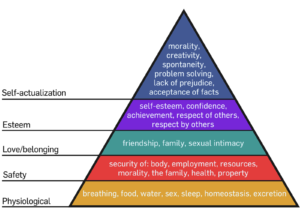Know & Support Your Team
Understand Personality Styles
Understanding your team’s diverse personality traits can help you anticipate how they will respond to certain challenges and opportunities. Knowing what makes people tick, where their growing edges are and where they bring value allows you to make wise and helpful decisions when it comes to strategy, communication, and management.
There are many tools and tests for identifying personality types, which can be used by and with employees to help you both understand and find language for their strengths and needs for thriving in the workplace.
Each type brings strengths and weaknesses to the table, and while a diverse mix makes a team stronger, it also requires a degree of emotional intelligence and understanding of each other to collaborate well.
Here are two popular tools for assessing personality types, although many others exist, and you may need to look around to find what resonates:
Myers-Briggs Type Indicator
This system is based on the work and theories of Swiss psychoanalyst Carl Gustav Jung. It focuses on how people use their minds and will evaluate an individual across four categories:
- Extraversion or Introversion – this relates to how people get energy and where their attention is naturally more focused.
- Sensing or Intuition – this relates to how people receive information and process it.
- Thinking or feeling – this relates to an individual’s primary mode of decision making.
- Judging or perceiving – this relates to how a person processes and perceives the world around them
Type A and B Personalities
These two personality types were identified and named by cardiologists Friedman and Rosenman in the 70s when they discovered behavior patterns in their cardiac patients.
Type As are characterized by competitiveness, time urgency and hostility. They are prone to overworking, perfectionism and struggle to wind down and switch off. This unfortunately makes them more prone to heart disease and high blood pressure.
Type Bs by contrast exhibit personality traits such as being relaxed, easy-going and patient. They tend to work at a steadier pace and are less stressed about goal achievement. They tend to exhibit greater tolerance towards others and higher levels of creativity.
Type Cs show more people-pleasing behaviors, patience, and passivity than other types. They also tend to struggle with expressing emotions and needs, particularly anger or frustration. They avoid conflict and prioritize compliance and being liked.
Understand Individual Employee Motivation
Psychologists studying motivation examine the causes of our goal-directed behavior and the reasons why that behavior may vary in its intensity. Motivation is dynamic. We can be motivated by something in one moment, and in the next, we may be motivated by something else entirely.
Motivational science is an area of behavioral studies, which puts together theories on what motivation is and how it works. Scientists study motivation by observing behavior, brain activity and physiology such as heart rate or changes to our pupil size.
There have been countless theories suggested about how motivation works. Here are three of the most well-known and respected theories about motivation:
- Maslow’s Need Hierarchy Theory – Abraham Maslow put forward a well-known theory based on the hierarchy of human needs. Maslow believed that once we have satisfied a need, it no longer motivates us, and can then only be motivated by some higher need that we have yet to satisfy.
- Herzberg’s Motivation Hygiene Theory – Frederick Herzberg built on Maslow’s work before him and proposes that both the presence and absence of satisfaction and dissatisfaction can be motivators.
- McClelland’s Need Theory – David McClelland proposed that we acquire different kinds of needs based on our education and environment and that different people show different behaviors and respond to different motivators depending on which needs they have acquired.
Factors Affecting Motivation in Work
Let’s look at some of the factors that increase motivation in the workplace. These can include:
Trusted leaders – when we trust the leadership of our organization, we are motivated to do well for them and contribute to the company’s overall goals. Having a positive and transparent relationship between employees and managers promotes a sense of mutual accountability and motivation to deliver on expectations.
Feeling valued – when we know that our role is valued in the company and that what we do is recognized as making a difference, we feel more motivated to do our best work. Everyone likes to feel they are skilled in their role and are growing in value as a result of their efforts.
Proving ourselves – we are often motivated by the desire to show others what we can do and to prove wrong anyone who has doubted our ability in the past. The motivation to innovate, excel and take responsible risks often comes from the desire to exceed expectations – our own and others.
Career progression – moving up the ladder in their career of choice is highly motivating for many people. If achieving a goal or fulfilling a certain target will lead to career advancement, it will likely be a highly motivating factor.
Safety and security – the prospect of a stable and secure future can be a strong motivator for some of us. We are likely to feel motivated to achieve a certain standard if the reward for doing so is a secure long-term contract or a pay raise that provides greater financial security for their family.
Ego – some people are simply motivated by the idea of becoming well-known, receiving public recognition or awards, and achieving greater social and professional status. This kind of motivation can have its downsides as it may not include the wider goals of our company as a whole and can lead to excessive risk-taking.
Impact – some people are motivated by the opportunity to create impact. This might be in terms of the benefit to the company and the legacy we leave behind, or the wider social or environmental impact of our work.
Happiness – enjoying our work is a great motivator for most people. Feeling pleasure and satisfaction as an outcome of working on a particular project or task is highly motivating. This happiness can be derived from satisfaction at the outcome, a feeling of challenge or value or simply the joy of carrying out the task itself.
Exercise – Team Motivation
Assess the different ways in which you provide opportunities for your team to experience each of the motivators above. Mark each with a score out of 10 where 10 is you could not do any better, and 0 means you could not do any worse. Which areas do you see are effective for motivating your team? Which could you do more in?




